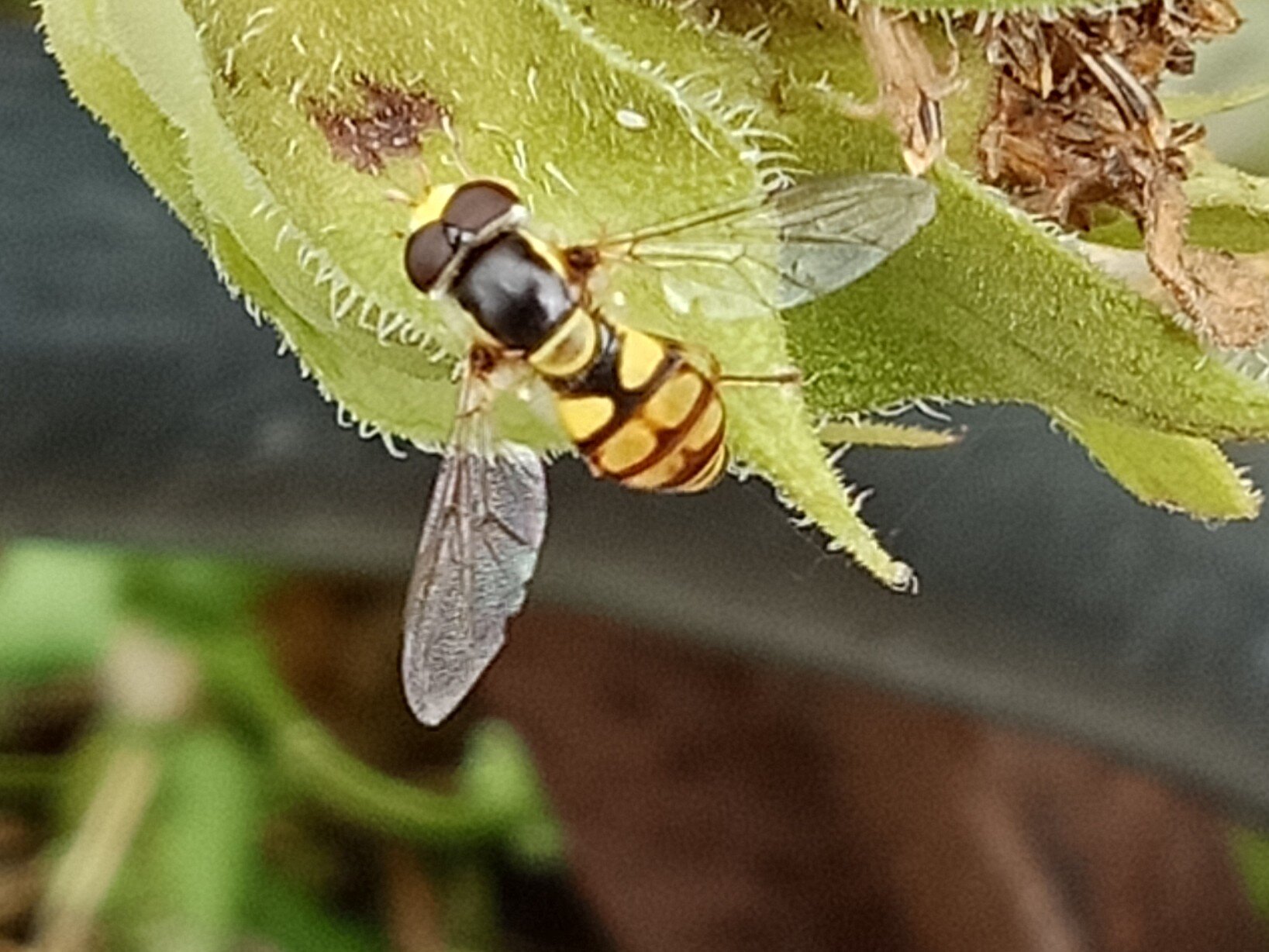Hoverflies
Have you seen a little wasp like fly buzzing around your garden hovering in one spot? If so it’s likely you have encountered a hoverfly, also sometimes called a flower fly.
Description
There are many different species of hoverflies with some looking more bee like in appearance however all have the helicopter flying habit that easily identifies them. They make up the insect family of Syrphidae. Hoverflies can often be heard before they are seen making a loud buzzing noise akin to a bee. While they have the appearance of a bee or wasp they are a true fly due to only having one set of wings . They typically have the yellow and black warning colours to keep predators away and some will even mimic a stinging motion if trapped however they are completely harmless and mostly beneficial to a gardener.
Life cycle
Eggs are laid near aphid colonies where the larvae heavily predate on aphids and other soft bodied insects including thrips, scale and caterpillars. They grow up to 5mm in length and have the appearance of a maggot. The larvae hunt by touch and use a mouth hook to extract body fluids from their prey. Once they have had their fill of aphids they then attach themselves to a twig or leaf and pupate before metamorphing into the fast darting fly that’s easier to recognise. The adult fly is a pollinator that feeds off nectar and honey dew created by aphids.
How to attract
The adult hoverfly typically feeds on nectar, and as such fragrant flowers and herbs can help attract them to an area along with a healthy level of aphids. Avoiding the use of insecticides can go a long way to help re-establish a healthy eco system including a range of predatory critters.
Attractive plants include garlic chives, sweet alyssum, and oregano.
Further reading


